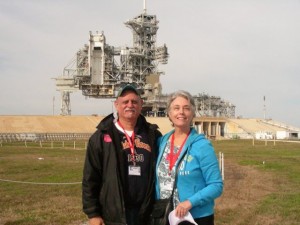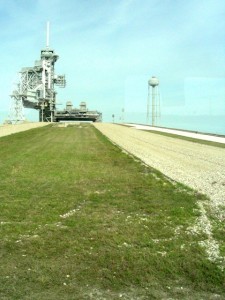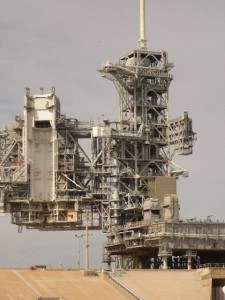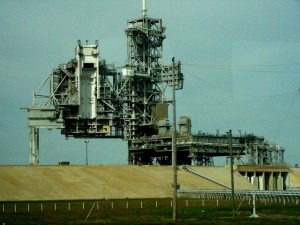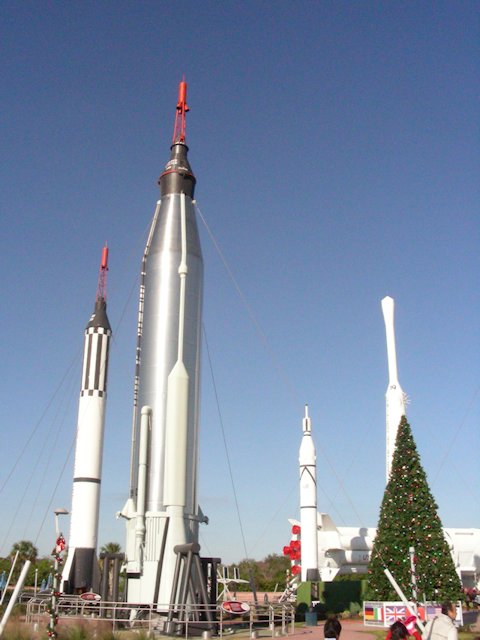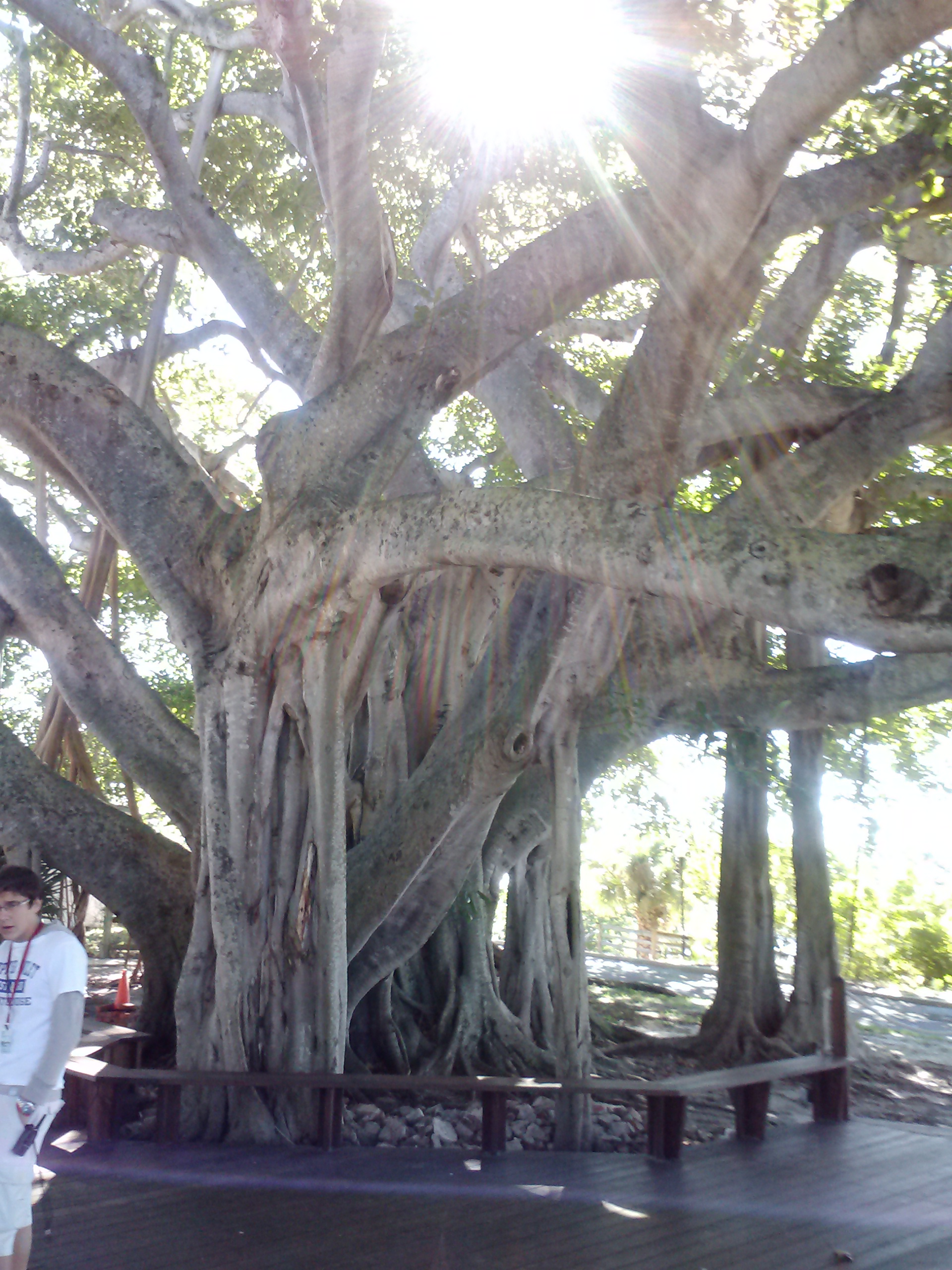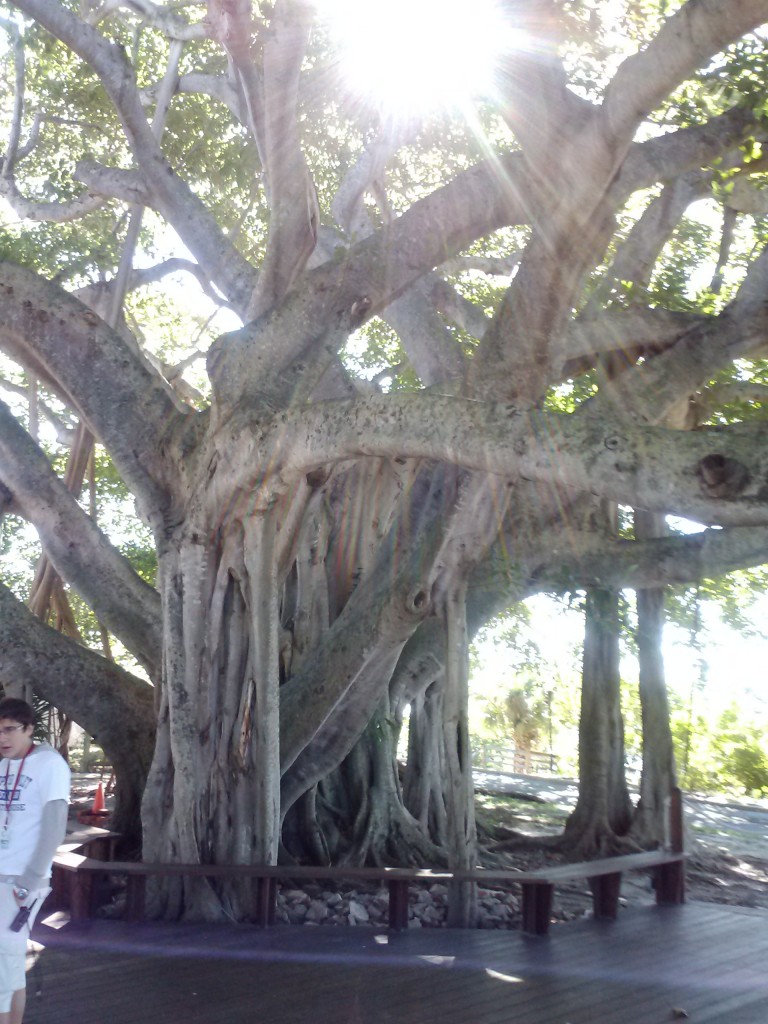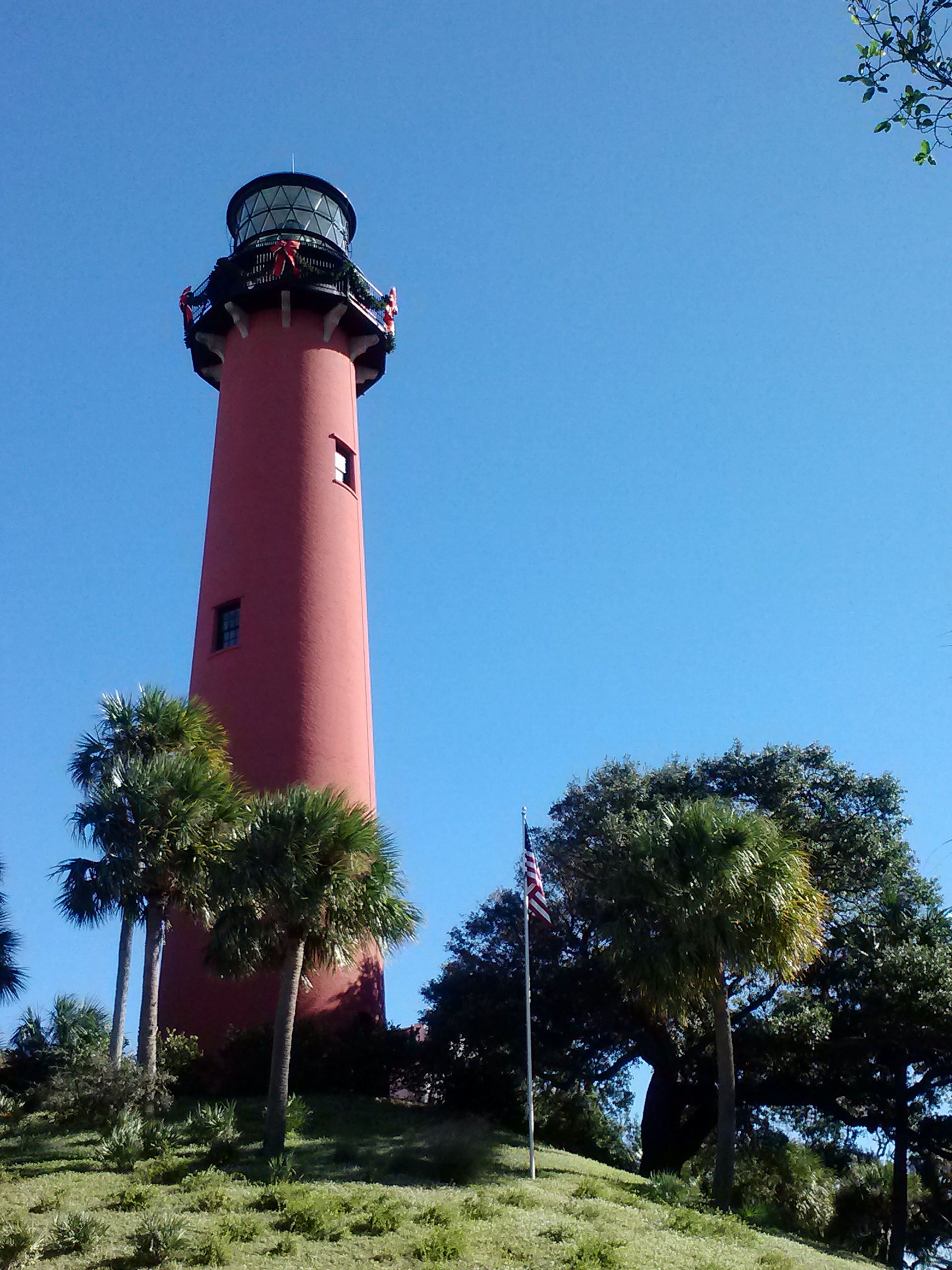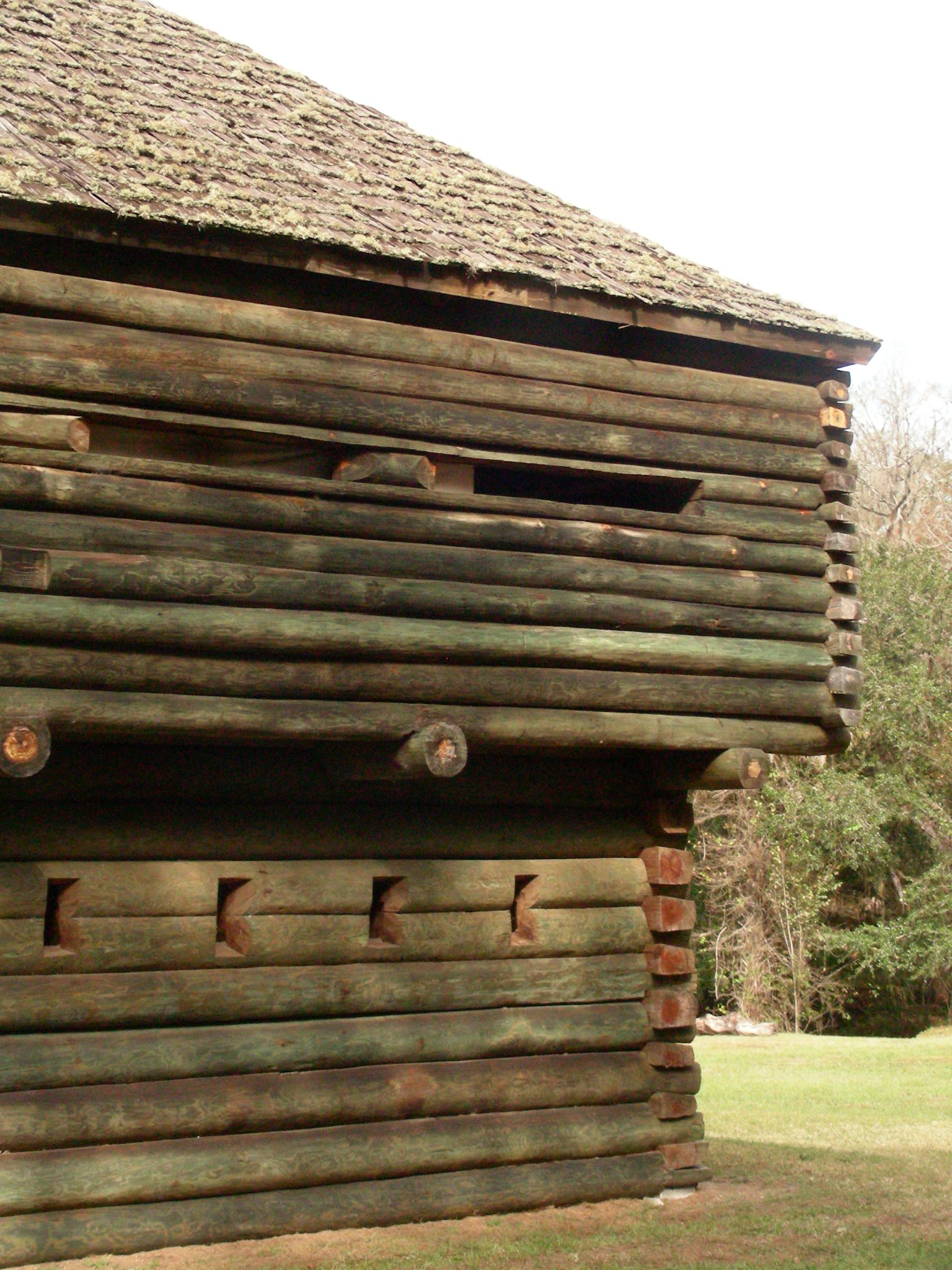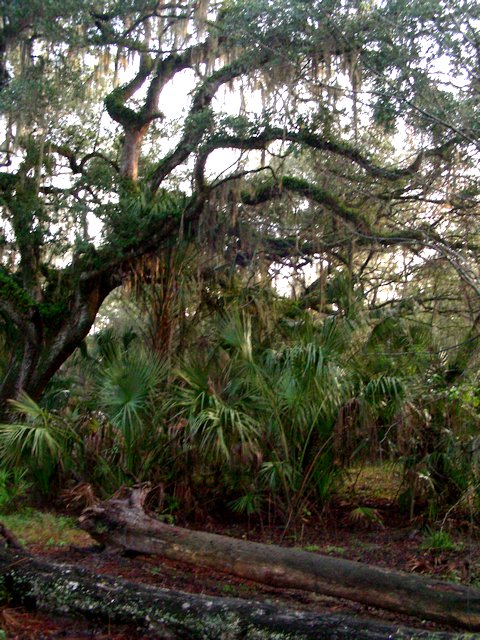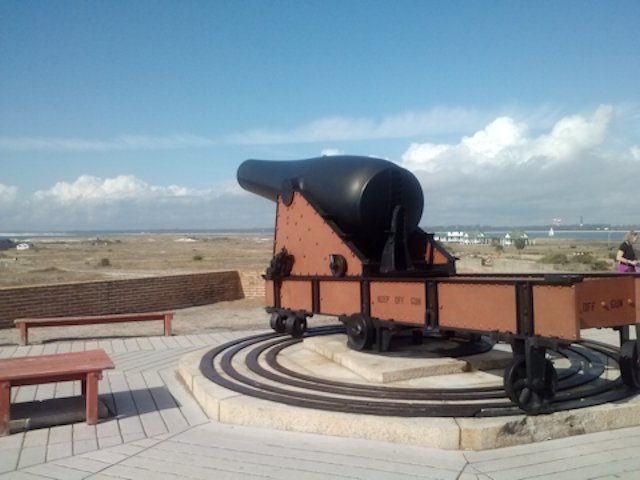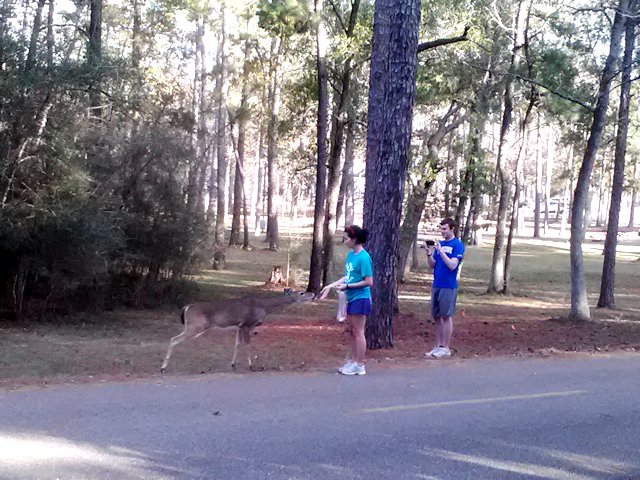When we visited the NASA Kennedy Space Center visitor center we learned that they were offering some “Up Close” tours that are usually not offered. Jeff is very interested in rockets and NASA so we chose to take two tours. The first tour we took was of Launch Pad 39A. Except for Apollo 1 (which blew up on the pad) every manned flight, every moon flight, every shuttle flight has taken off from Launch Pad 39A. Until these tours started recently, no civilian and very few NASA workers has ever been as close to the launch pad as we were.
This first picture is of us with the launch pad behind us. It’s hard to imagine how massive it is until you’re right there.
Here’s a picture of the launch pad showing the tracks where the rocket is brought to the launch pad by a ‘crawler’. The tracks are dug down 7-8 feet and filled with concrete, sand and then topped with Alabama river rock. The Alabama river rock is important because it does not spark. A spark under a rocket filled to capacity with high explosives would be bad!
Here are a couple pictures of the launch pad. Notice that there appears to be a section that is anchored at the base, and then there’s a section on the left that isn’t anchored. When the shuttle and the rocket that it’s attached to are put into place, that left section closes around it to provide stability while it’s standing there and as it starts to launch. Also notice near the center of the photo there’s a small white box. That box is where the astronauts walk through to get to the shuttle. That little box holds all the astronauts plus several people that help them get ready to board.
Here’s another picture of the launch pad:
And, we were then taken to the back side of the launch pad where we could see underneath the pad. When the rocket launches, I’m sure you’ve seen video of the flames and white smoke along with the shaking and tremendous noise of the rocket firing. The white smoke is actually steam from the sound-suppression system which pumps hundreds of gallons of water into the flames. If not for the sound-suppression system every animal and human standing within a mile of the launch would be killed by the soundwave! The flames and water are channeled through the bottom of the pad where we were standing to take the picture, and channeled to holding tanks. We could see how scorched the area was from the flames from so many rockets that were launched on Launch Pad 39A.
Next we’re going to tour the Vehicle Assembly Building. This tour will stop at the end of the year (tomorrow!) because they’ll be starting the remodel of the building for the next type of rockets that will be launched. The shuttle program has ended, but not the space program!


